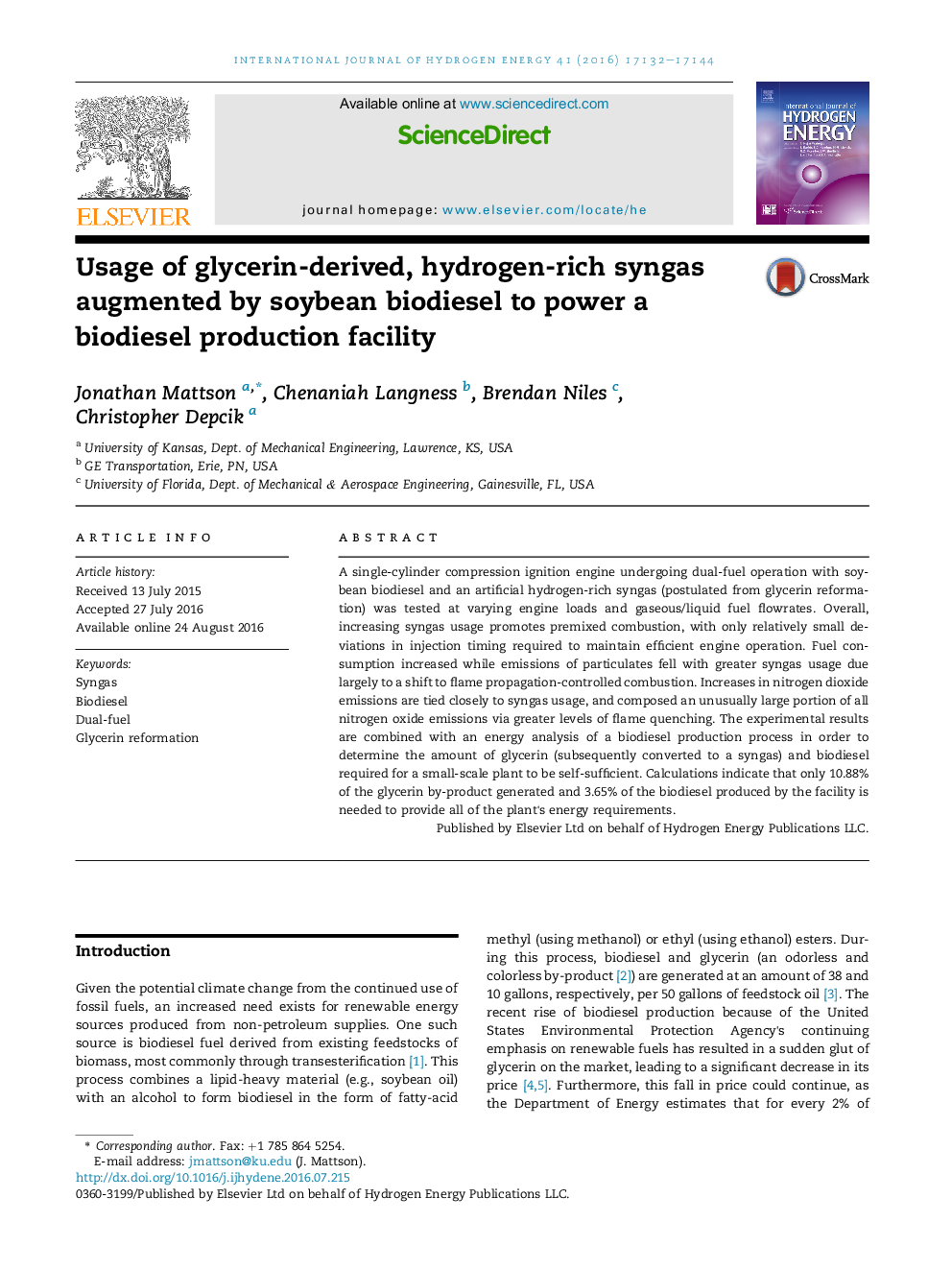| Article ID | Journal | Published Year | Pages | File Type |
|---|---|---|---|---|
| 5147723 | International Journal of Hydrogen Energy | 2016 | 13 Pages |
Abstract
A single-cylinder compression ignition engine undergoing dual-fuel operation with soybean biodiesel and an artificial hydrogen-rich syngas (postulated from glycerin reformation) was tested at varying engine loads and gaseous/liquid fuel flowrates. Overall, increasing syngas usage promotes premixed combustion, with only relatively small deviations in injection timing required to maintain efficient engine operation. Fuel consumption increased while emissions of particulates fell with greater syngas usage due largely to a shift to flame propagation-controlled combustion. Increases in nitrogen dioxide emissions are tied closely to syngas usage, and composed an unusually large portion of all nitrogen oxide emissions via greater levels of flame quenching. The experimental results are combined with an energy analysis of a biodiesel production process in order to determine the amount of glycerin (subsequently converted to a syngas) and biodiesel required for a small-scale plant to be self-sufficient. Calculations indicate that only 10.88% of the glycerin by-product generated and 3.65% of the biodiesel produced by the facility is needed to provide all of the plant's energy requirements.
Related Topics
Physical Sciences and Engineering
Chemistry
Electrochemistry
Authors
Jonathan Mattson, Chenaniah Langness, Brendan Niles, Christopher Depcik,
